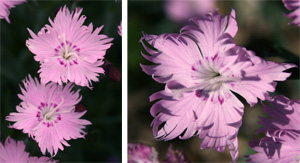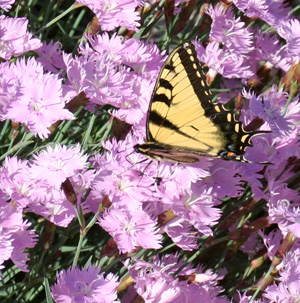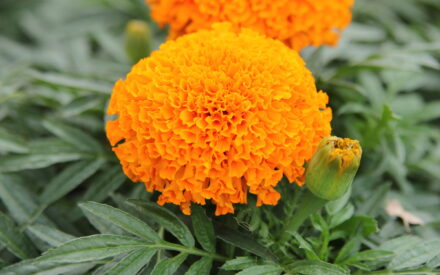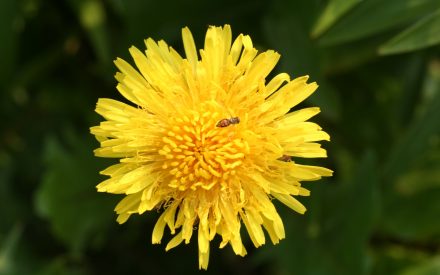
There are over 300 species in the genus Dianthus (because many of the species readily hybridize it’s hard to determine exactly how many species there really are), and thousands of cultivars within the garden-worthy ones. Native from Europe to western Asia and down to southern Africa, these plants in the carnation family (Caryophyllaceae) may be annual, biennial, or perennial. Commonly referred to as “pinks”, that name comes from the finely divided edges of the flowers, which somewhat resemble the zigzag pattern created by pinking shears. One of the best of the pink flowering cultivars of D. gratianopolitanus (cheddar pinks) is the variety ‘Bath’s Pink’. Its name comes from Jane Bath of Stone Mountain, GA who discovered it. This variety is hardy in zones 3-8.

In mid to late spring, single flowers are produced on wiry stems up to 10” tall above the foliage. Each 1” star-like flower is a bright but soft pink with fringed edges and a red band surrounding the white throat. The plant is generally completely covered with flowers, remaining in bloom for several weeks. The flowers are fragrant, especially in the evening, and are attractive to butterflies and other insects. Shearing after this main bloom will encourage sporadic repeat bloom in summer but typically ‘Bath’s Pink’ blooms heavily in the spring and very little for the rest of the season.

The fine, blue-green leaves are linear and almost grasslike. The plants form a mounded mat 6-8” high and spreading 24-30” wide. The foliage remains attractive throughout the year – being evergreen in milder climates. It tolerates heat, cold, humidity and drought better than many other Dianthus. Clumps can be kept to a smaller size by pruning in very early spring or after blooming.

‘Bath’s Pink’ is an excellent choice for the front of a garden border and in larger rock gardens. Plant it near walkways, paths, patios, or other places where the spicy fragrance of the flowers can be enjoyed. Its vigorous and spreading nature makes it useful as a ground cover when massed together. It can also be useful as an edging and is right at home in cottage gardens. This cultivar can be grown in containers.
Like most Dianthus, ‘Bath’s Pink’ does best with full sun and well-drained, slightly alkaline soil. Root rot can be a problem if they remain too wet, especially in winter/early spring. Fortunately it is not favored by deer.

Divide every few years in early spring or when the centers start to die out. As this plant tends to root along the stems that remain in contact with moist ground (more easily than most Dianthus), the edges of a clump can often be transplanted to form a new clump. This plant can be propagated by terminal cuttings taken and rooted in early summer as well.
– Susan Mahr, University of Wisconsin
Latest from Wisconsin Yard & Garden
Ask Your Gardening Question
If you’re unable to find the information you need, please submit your gardening question here:





 Marigolds
Marigolds Create a Butterfly Garden
Create a Butterfly Garden Plant Flowers to Encourage Beneficial Insects
Plant Flowers to Encourage Beneficial Insects Forcing Bulbs
Forcing Bulbs


